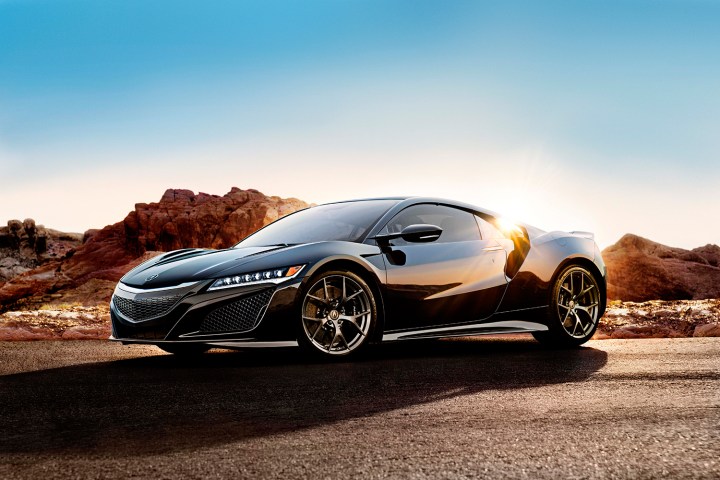
There is a “huge will” within Acura parent Honda to build an NSX Type R, reports Autocar. The NSX is sold as a Honda outside the U.S., and a Type R version of the previous generation was distributed in those overseas markets as well. While it hasn’t gotten the green light for sale anywhere, the new Type R could be a radical departure from the car Acura just launched, and something U.S. fans won’t want to miss out on.
The standard NSX has an all-wheel drive hybrid powertrain including a 3.5-liter twin-turbocharged V6, a nine-speed dual-clutch transmission, and three electric motors. An NSX Type R would reportedly ditch the front motors, reducing weight and giving the car a livelier, rear-wheel drive setup. The third motor, which is mounted behind the transmission, would remain. It helps drive the rear wheels and smooth out the transmission’s shifts in the stock NSX.
Engineers could also make more extensive use of lightweight materials to bring curb weight down further. The NSX already features body panels made of aluminum and Sheet Molding Compound, and a chassis that’s mostly aluminum and high-strength steel, but that may not be enough. The Type R is envisioned as a track car that could go head to head with the Porsche 911 GT3, NSX Dynamic Development Leader Nick Robinson said.
He also said there has already been some experimentation with a rear-wheel drive NSX. The car apparently has a “maintenance mode” that Robinson likens to a video game cheat code. It shuts off all of the electric-motor assist, defaulting the car to rear-wheel drive. Honda also reportedly plans to enter a modified NSX with no hybrid components in the Pikes Peak International Hill Climb this year.
Speaking of racing, an NSX Type R might also make sense if Honda or Acura follows through on rumored plans to race the new supercar long term. The company is reportedly preparing a version of the NSX for the popular GT3 class in both the U.S. and Europe. It will probably be easier for Acura to certify a non-hybrid version because it would be directly comparable to other cars in the class, and a road going Type R version would make for a nice marketing opportunity.
Editors' Recommendations
- Audi’s tail-wagging rear-wheel-drive R8 will play an encore in 2020
- Acura shows the tech differences between a sports car and a race car
- Acura engineers love speed so much that they set up a Pikes Peak race team


